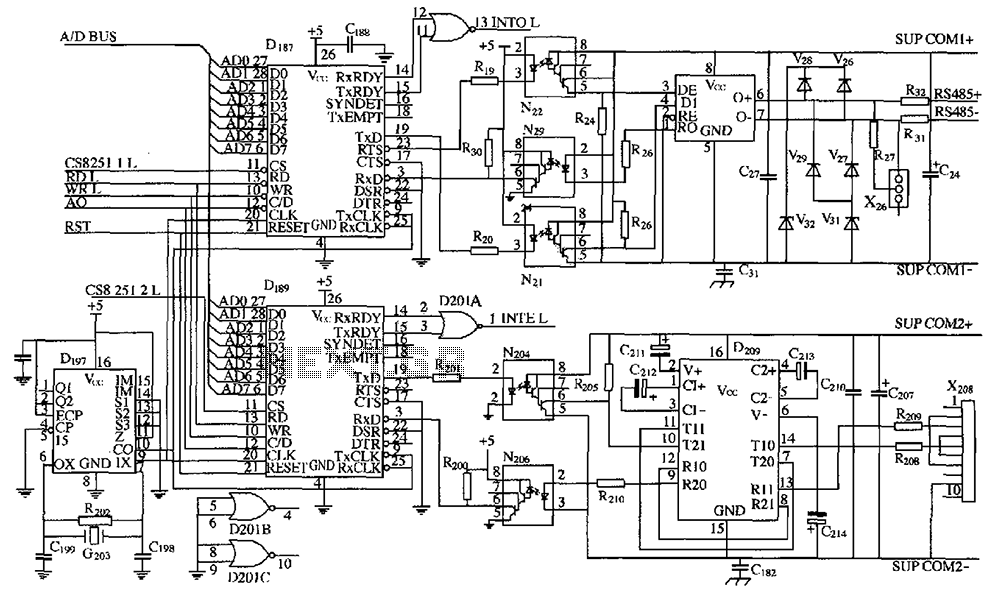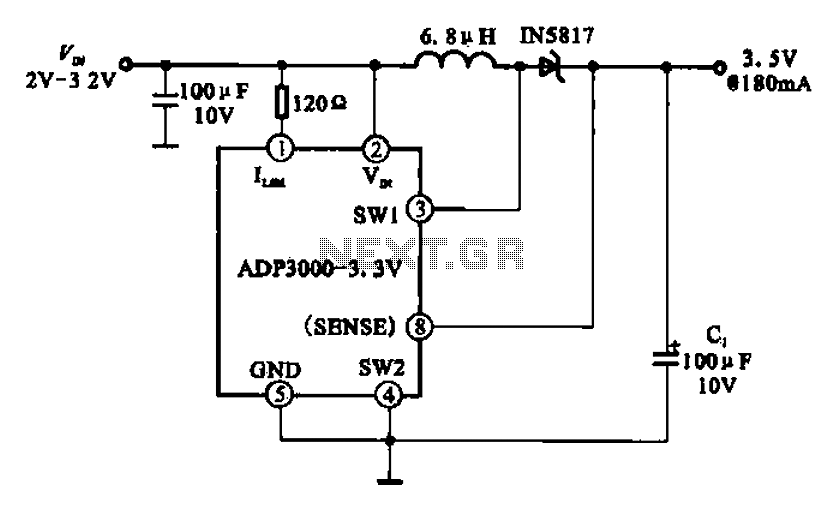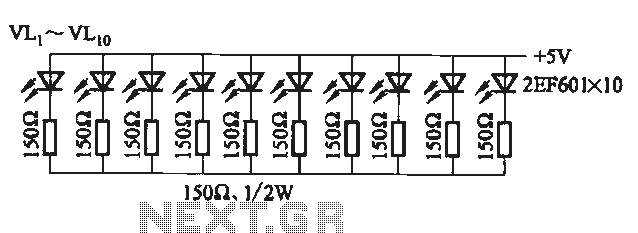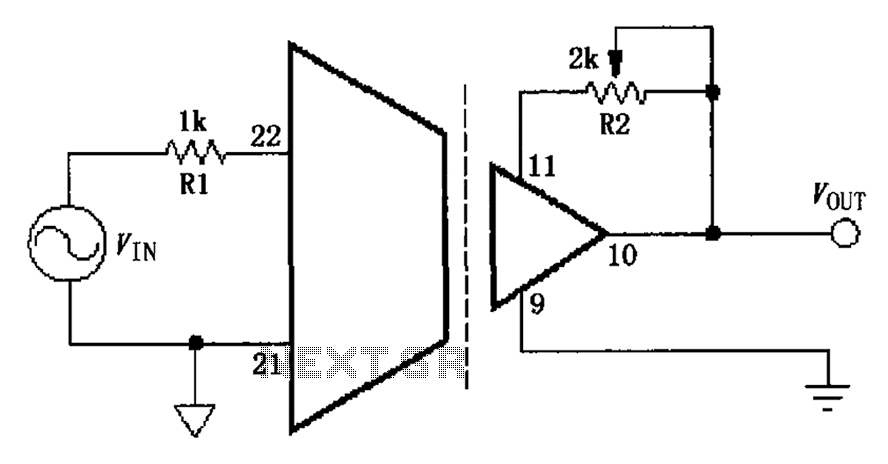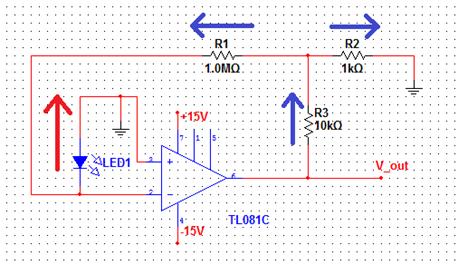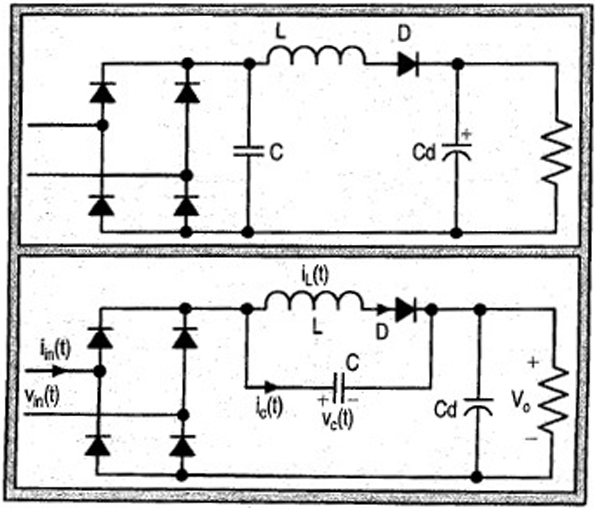
Stepping HM4246 touch dimmer light circuit
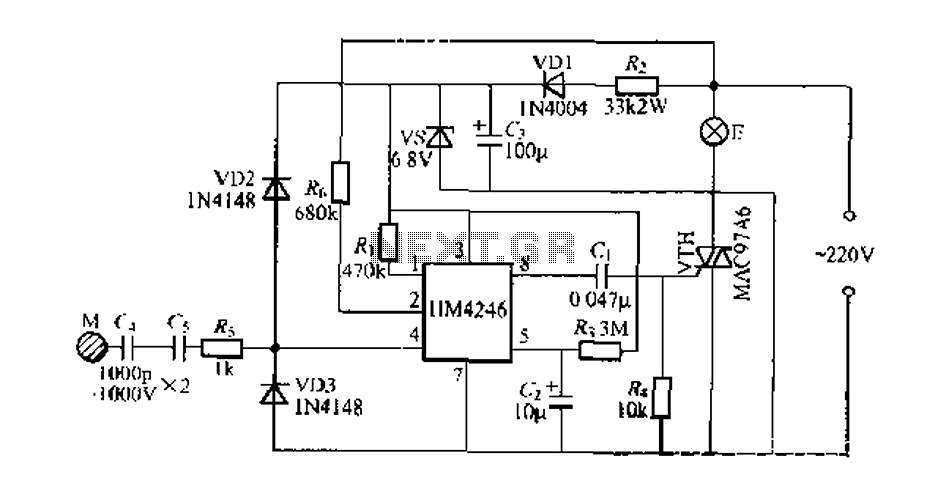
Development and production of a specialized touch dimmer integrated circuit. This circuit features four lighting functions: dark, medium, light, and a touch-sensitive trigger on all four sides. It has low harmonic radiation emission, high touch sensitivity, and stability. It can accommodate long cables and high sense of dummy load plates (-iOOpF). It is suitable for use in Feng spider lamps and other lighting applications where brightness adjustment is necessary. The HM4246 integrated circuit utilizes a standard DIP 8 package. Each pin serves a specific function: Pin 1 is the clock signal input terminal; Pin 2 is for 60/50Hz AC input frequency; Pin 3 is the positive power supply terminal; Pin 4 is the touch-sensitive input; Pin 5 is the sensitivity control terminal; Pin 6 is a null foot; Pin 7 is the negative power supply terminal; and Pin 8 is the pulse signal output, which triggers the thyristor driver. The HM4246 operates with a power supply voltage ranging from 5 to 6V. It is recommended to use RJ-2W metal film resistors, and capacitors rated for 1000V, such as CBB polypropylene capacitors, to ensure user safety. Standard CD11-16V electrolytic capacitors can be used. When the touch input is activated repeatedly, the bulbs will cycle through the following states: dark, medium, and bright.
The touch dimmer integrated circuit, HM4246, is designed to provide a user-friendly interface for controlling the brightness of various lighting fixtures. Its four distinct lighting modes—dark, medium, light, and a touch-triggered function—allow for customizable illumination based on user preference. The design emphasizes low harmonic radiation emissions, making it suitable for sensitive environments.
The circuit's architecture is based on a standard DIP 8 package, which facilitates easy integration into various lighting systems. Each pin on the HM4246 serves a critical role in the operation of the dimmer. The clock signal input (Pin 1) synchronizes the circuit's timing, while the AC input frequency (Pin 2) ensures compatibility with standard electrical systems. The positive and negative power supply terminals (Pins 3 and 7) provide the necessary voltage for operation, typically in the range of 5 to 6V.
The touch-sensitive input (Pin 4) is a crucial feature that enables the user to adjust brightness levels with a simple touch. This is complemented by the sensitivity control terminal (Pin 5), allowing for fine-tuning of the touch response to accommodate different user preferences and environmental conditions. The null foot (Pin 6) is included for circuit stability and grounding purposes.
The pulse signal output (Pin 8) is designed to trigger a thyristor driver, allowing for efficient control of the connected lighting load. This feature is particularly beneficial for applications such as Feng spider lamps, where precise brightness control enhances the overall ambiance.
To ensure reliability and safety, the circuit design recommends the use of RJ-2W metal film resistors, which provide stable performance under varying conditions. Additionally, the use of CBB polypropylene capacitors rated for 1000V is critical to prevent voltage spikes that could harm the circuit or the user. Standard electrolytic capacitors, such as CD11-16V, can be employed for power smoothing.
In summary, the HM4246 touch dimmer integrated circuit is a versatile and reliable solution for modern lighting applications, combining ease of use with advanced features to meet diverse user needs.Development and production of special touch dimmer integrated circuit, it has a dark, medium, light, take along a touch against the four side light function for zero trigger, h armonic radiation emission is low. Has high touch sensitivity and stability, can be adapted to long cables and high sense of dummy load plate (-iOOpF), to be used for Feng spider lamp and other lighting with brightness adjustment night, which see Azerbaijan 1 circuit 34. HM4246 integrated circuit using standard DIP 8·?bullock, each pin functions can provide: O foot LK, a clock signal input terminal; feet Fl.
Is 60 2/50Hz AC input frequency; foot VT, -, is positive power supply terminal; feet TI. A touch-sensitive input; feet CI, as a sensitivity control terminal; foot N (1, null foot; V Zhi feet, the negative power supply terminal; feet AT, the pulse signal output, triggered thyristor drive canthus .HM4246 power supply voltage in the range of 5 ~ 6 SV. the H, R. require the use of RJ-2W metal film resistors, e, c5 should withstand loooV the CBB polypropylene capacitors to ensure the safety of users.
[1 :,. G available CD11-16V ordinary electrolytic capacitors use, when the hand touched repeatedly M, bulbs E state order: dark towel Koichi Koichi -J brightest lights of a dark Koichi. cycling for selection.
The touch dimmer integrated circuit, HM4246, is designed to provide a user-friendly interface for controlling the brightness of various lighting fixtures. Its four distinct lighting modes—dark, medium, light, and a touch-triggered function—allow for customizable illumination based on user preference. The design emphasizes low harmonic radiation emissions, making it suitable for sensitive environments.
The circuit's architecture is based on a standard DIP 8 package, which facilitates easy integration into various lighting systems. Each pin on the HM4246 serves a critical role in the operation of the dimmer. The clock signal input (Pin 1) synchronizes the circuit's timing, while the AC input frequency (Pin 2) ensures compatibility with standard electrical systems. The positive and negative power supply terminals (Pins 3 and 7) provide the necessary voltage for operation, typically in the range of 5 to 6V.
The touch-sensitive input (Pin 4) is a crucial feature that enables the user to adjust brightness levels with a simple touch. This is complemented by the sensitivity control terminal (Pin 5), allowing for fine-tuning of the touch response to accommodate different user preferences and environmental conditions. The null foot (Pin 6) is included for circuit stability and grounding purposes.
The pulse signal output (Pin 8) is designed to trigger a thyristor driver, allowing for efficient control of the connected lighting load. This feature is particularly beneficial for applications such as Feng spider lamps, where precise brightness control enhances the overall ambiance.
To ensure reliability and safety, the circuit design recommends the use of RJ-2W metal film resistors, which provide stable performance under varying conditions. Additionally, the use of CBB polypropylene capacitors rated for 1000V is critical to prevent voltage spikes that could harm the circuit or the user. Standard electrolytic capacitors, such as CD11-16V, can be employed for power smoothing.
In summary, the HM4246 touch dimmer integrated circuit is a versatile and reliable solution for modern lighting applications, combining ease of use with advanced features to meet diverse user needs.Development and production of special touch dimmer integrated circuit, it has a dark, medium, light, take along a touch against the four side light function for zero trigger, h armonic radiation emission is low. Has high touch sensitivity and stability, can be adapted to long cables and high sense of dummy load plate (-iOOpF), to be used for Feng spider lamp and other lighting with brightness adjustment night, which see Azerbaijan 1 circuit 34. HM4246 integrated circuit using standard DIP 8·?bullock, each pin functions can provide: O foot LK, a clock signal input terminal; feet Fl.
Is 60 2/50Hz AC input frequency; foot VT, -, is positive power supply terminal; feet TI. A touch-sensitive input; feet CI, as a sensitivity control terminal; foot N (1, null foot; V Zhi feet, the negative power supply terminal; feet AT, the pulse signal output, triggered thyristor drive canthus .HM4246 power supply voltage in the range of 5 ~ 6 SV. the H, R. require the use of RJ-2W metal film resistors, e, c5 should withstand loooV the CBB polypropylene capacitors to ensure the safety of users.
[1 :,. G available CD11-16V ordinary electrolytic capacitors use, when the hand touched repeatedly M, bulbs E state order: dark towel Koichi Koichi -J brightest lights of a dark Koichi. cycling for selection.
